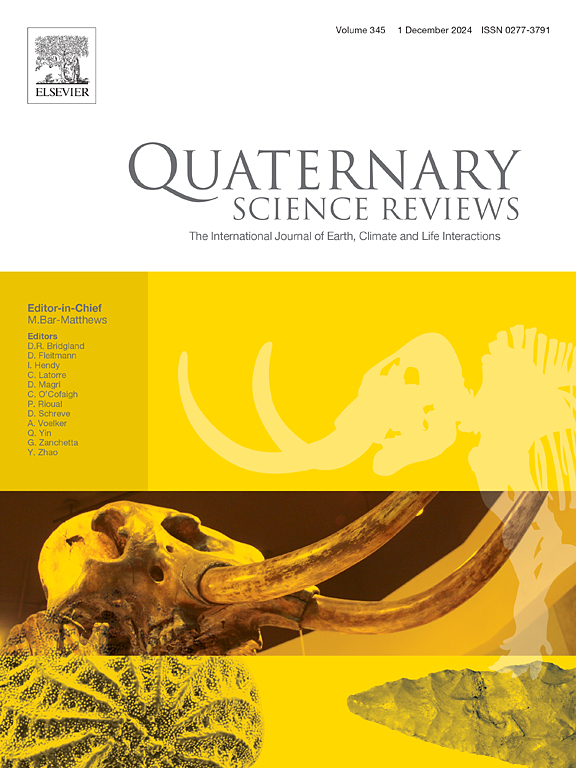Dynamics of animal grazing intensity on the central-eastern Qinghai-Tibetan Plateau during the middle-late Holocene
IF 3.2
1区 地球科学
Q1 GEOGRAPHY, PHYSICAL
引用次数: 0
Abstract
Animal grazing is the primary livelihood of people on the Qinghai-Tibetan Plateau (QTP), but the history of grazing activity on the QTP remains unclear. The QTP also served as a crucial area for exchanges between people at varying altitudes and latitudes. We analyzed fossil fungal spores from a sediment core retrieved from Muricuo Lake (elevation: 4020 m a.s.l) on the central-eastern QTP, spanning the past ∼9200 cal yr BP. Combining our findings with other coprophilous fungal spore data, along with paleoclimate and human activity records from the central-eastern QTP, we discuss the history and possible influencing factors of grazing activity on the central-eastern QTP during the middle to late Holocene. Grazing activity may have increased around ∼3600 cal yr BP in the Muricuo Lake area, likely driven by a general increase in movement of humans into the central-eastern QTP, as supported by the increase in fungal spores and charcoal records in Muricuo Lake. After ∼1400 cal yr BP, grazing activity intensified in parallel with increased trade exchanges.
全新世中晚期青藏高原中东部动物放牧强度的动态变化
放牧是青藏高原人民的主要生计方式,但青藏高原的放牧活动历史尚不清楚。青藏高原也是不同海拔和纬度的人们交流的重要区域。我们分析了从QTP中东部的Muricuo湖(海拔4020 m a.s.l)提取的沉积物岩芯中的真菌孢子化石,时间跨度为过去~ 9200 cal yr BP。结合本研究结果,结合青藏高原中东部地区的古气候和人类活动记录,讨论了全新世中晚期青藏高原中东部地区放牧活动的历史和可能的影响因素。穆里措湖地区的放牧活动可能在大约3600 cal yr BP左右有所增加,这可能是由人类向QTP中东部迁移的普遍增加所驱动的,穆里措湖真菌孢子和木炭记录的增加也支持了这一点。大约1400 cal yr BP之后,放牧活动随着贸易交流的增加而加剧。
本文章由计算机程序翻译,如有差异,请以英文原文为准。
求助全文
约1分钟内获得全文
求助全文
来源期刊

Quaternary Science Reviews
地学-地球科学综合
CiteScore
7.50
自引率
15.00%
发文量
388
审稿时长
3 months
期刊介绍:
Quaternary Science Reviews caters for all aspects of Quaternary science, and includes, for example, geology, geomorphology, geography, archaeology, soil science, palaeobotany, palaeontology, palaeoclimatology and the full range of applicable dating methods. The dividing line between what constitutes the review paper and one which contains new original data is not easy to establish, so QSR also publishes papers with new data especially if these perform a review function. All the Quaternary sciences are changing rapidly and subject to re-evaluation as the pace of discovery quickens; thus the diverse but comprehensive role of Quaternary Science Reviews keeps readers abreast of the wider issues relating to new developments in the field.
 求助内容:
求助内容: 应助结果提醒方式:
应助结果提醒方式:


